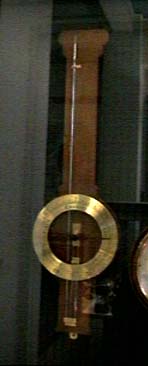|
Achievements
|
| Polyzoans: first to oberve and draw Polyzoans - microscopic animals in sea moss. |
| Windmill: invented a horizontal sail for windmills. |
| Equatorial Quadrant: designed the first equatorial quadrant which aided astronomical
observations. |
| Sun Spots: first to observe and record the existence of sun spots. |
| Helioscope: designed and created the first helioscope for studying the sun. |
| Cross-hairs: designed and created the first telescopic sight with cross hairs to aid
his astronomical studies. |
| Steeple: demonstated the principle of the catenary curve and its potential application in architecture
- improving the design of church steeples in London. |
| Mental Hospitals: pioneered the redesign of mental hospital
buildings, introducing the first concepts of ergonomics: in this case - buildings designed to assist the healing
process of the mentally ill. |
| Evolution: proposed the first concepts of evolution in rudimentary form - over 200 years before Darwin. |
| Heat: proposed,
in rudimentary form, a theory of combustion. |
| First: Hooke was Britain's first professional experimental scientist. |
| Computer: invented
the first western-world arithmetic machine. |
| Telescope: constructed the first Gregorian telescope. |
| Micrometer: developed an improved micrometer - and used it in his telescope sights
and surveying instruments. |
| Airgun: invented an air gun. |
